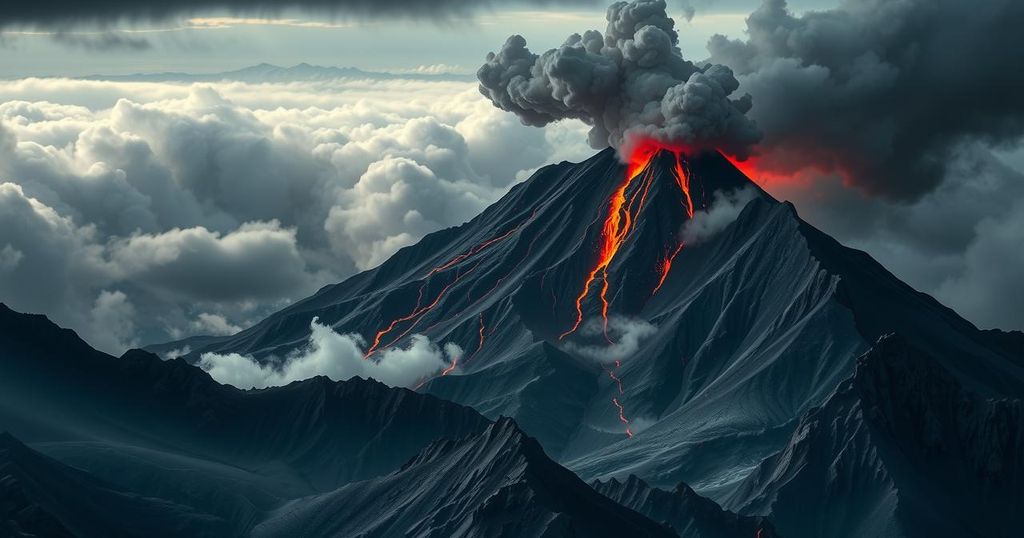Mount Spurr in Alaska Faces Increased Eruption Risks Amid Rising Seismic Activity

Mount Spurr in Alaska is experiencing increased seismic activity, prompting the Alaska Volcano Observatory to warn that an eruption may soon occur. Historically, the volcano has experienced two eruptions, with significant ash dispersal. Recent earthquake rates are high, and various eruption scenarios are currently being evaluated by geologists. While no immediate threat to populated areas exists, flight disruptions may happen.
Geologists are currently monitoring Mount Spurr, located in the Aleutian Arc of Alaska, due to a notable increase in seismic activity. According to the Alaska Volcano Observatory (AVO), the potential for an eruption could arise in the forthcoming days or weeks. Mount Spurr is a stratovolcano characterized by its cone shape and is covered in ice and snow, having erupted twice in recorded history, specifically in 1953 and 1992. Both eruptions originated from the Crater Peak flank vent, rather than directly from Mount Spurr itself.
The historical eruptions, although small, were explosive, resulting in the dispersal of volcanic ash across various regions of interior, south-central, and southeastern Alaska. The U.S. Geological Survey (USGS) has indicated that the ash clouds produced in 1992 traveled eastward, reaching as far as the North Atlantic within a few days following the event. Additionally, the pyroclastic flows during past eruptions triggered lahars that blocked sections of the Chakachatna River, impacting waterways south of the volcano.
Since April 2024, earthquake activity beneath Mount Spurr has seen a marked increase, averaging around 30 earthquakes per week. While this does not definitively suggest an impending eruption, seismic activity surged again in October 2024, resulting in approximately 125 detected earthquakes each week as of February 6. The most significant tremor to date occurred on January 2, measuring a magnitude of 2.9, indicating possible magmatic intrusion beneath the surface.
The AVO has proposed several possible scenarios based on the observed activity. One possibility is that the earthquakes may taper off without magma surfacing over the next several months. Alternatively, an eruption akin to those witnessed in 1953 and 1992 could occur, producing short-lived explosive events and extensive ash clouds. Despite the potential hazards posed, the risk of impact on nearby populated areas remains minimal.
A less likely scenario involves an explosive eruption from Mount Spurr’s summit, which could generate lava flows and significant hydrologic hazards due to melting glacier ice. Even though there are no towns in close proximity to the volcano that would face direct threats from pyroclastic flows, the lead of AVO, Matt Haney, has acknowledged that air traffic could be disrupted in the area due to volcanic activity. The monitoring team is employing a range of technologies, including webcams and seismic networks, to gather comprehensive data on the situation, hoping to ascertain whether an eruption is on the horizon.
In summary, geologists at the Alaska Volcano Observatory are closely observing Mount Spurr, where an increase in earthquake activity may indicate an imminent volcanic eruption. Historical eruptions from Mount Spurr have produced explosive ash clouds, with several potential scenarios outlined for future activity. Although nearby populated areas are unlikely to be affected directly by eruptive events, disruptions to air travel could occur as the situation develops. Continuous monitoring and data collection are vital to understanding this evolving geological phenomenon.
Original Source: www.iflscience.com






